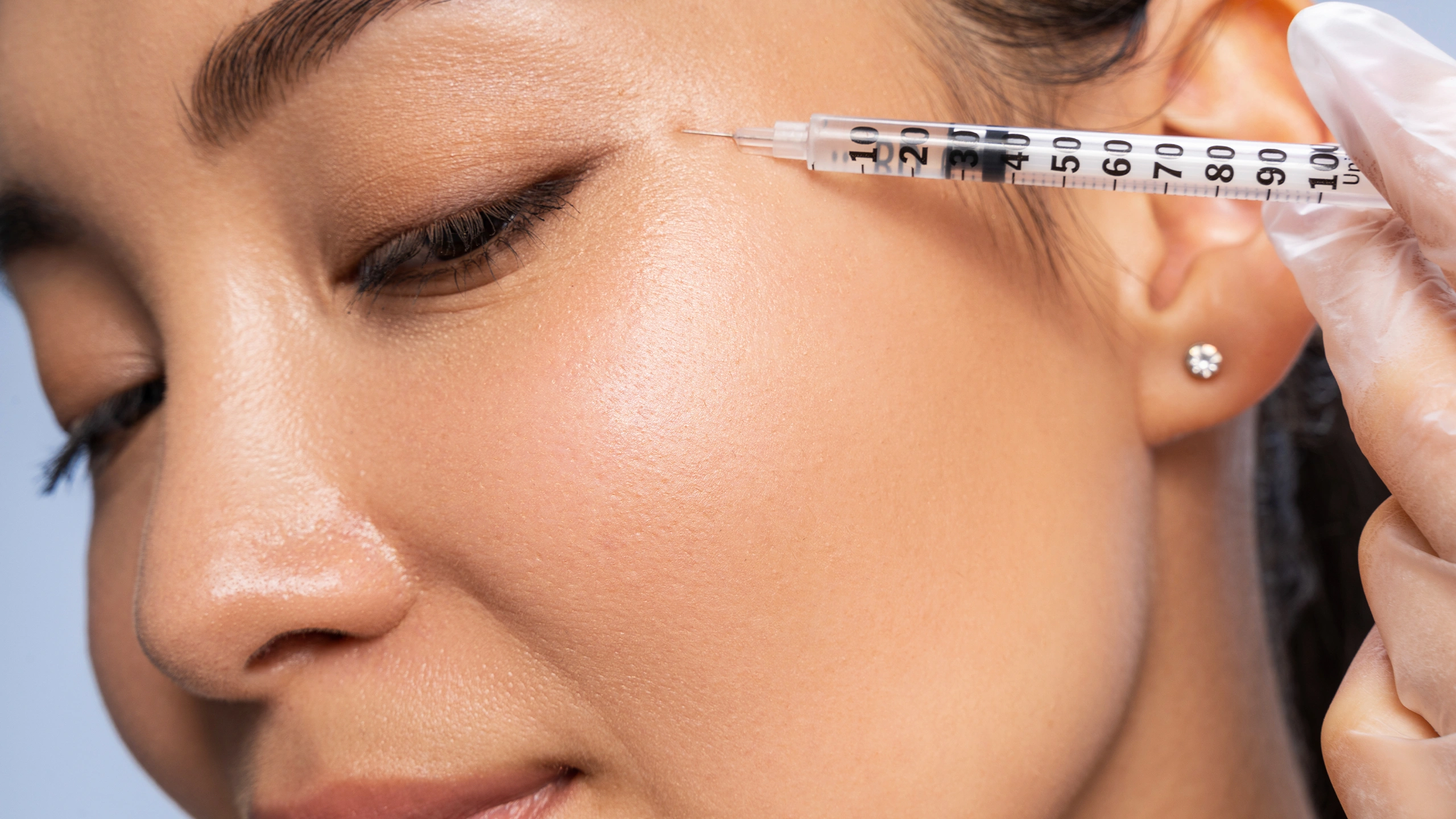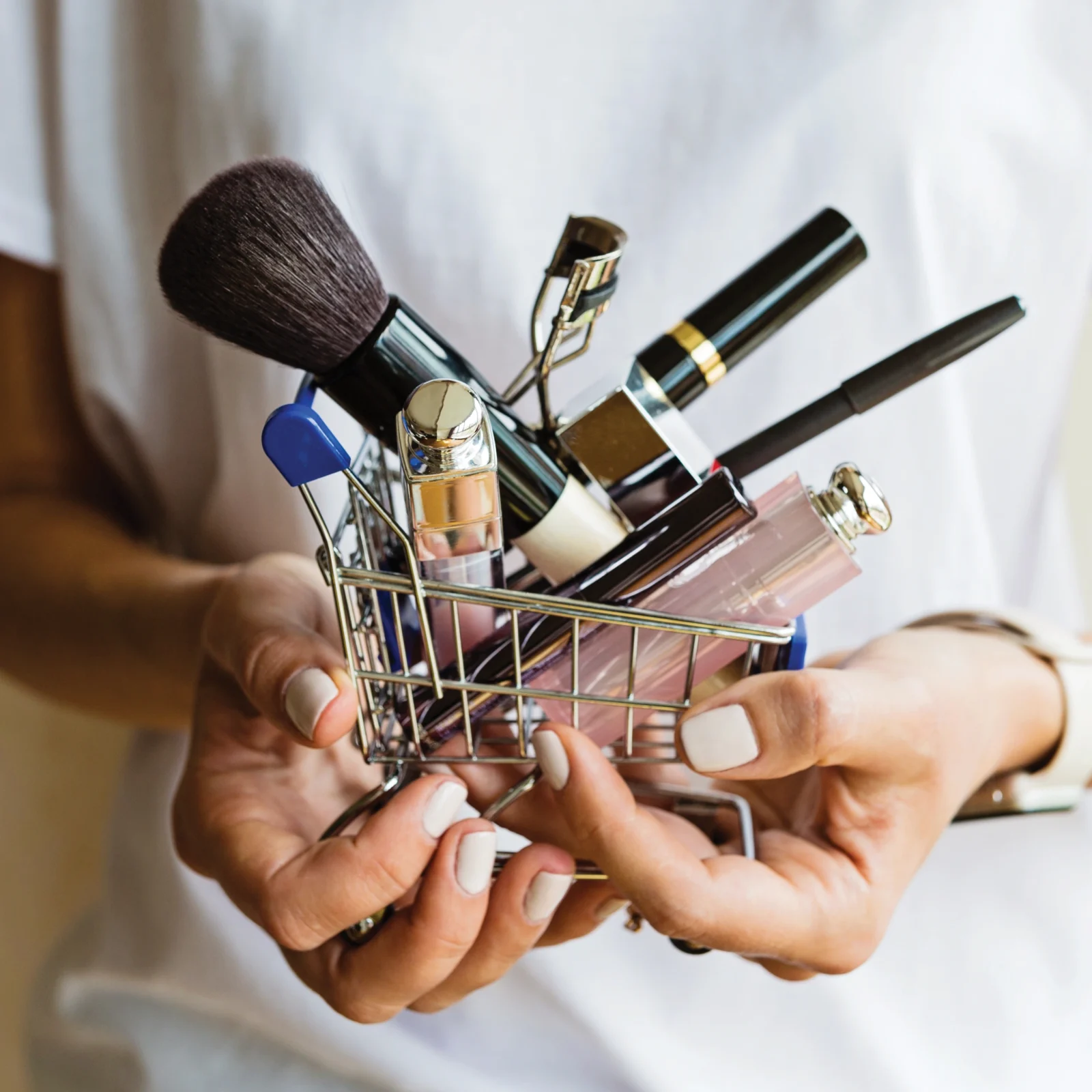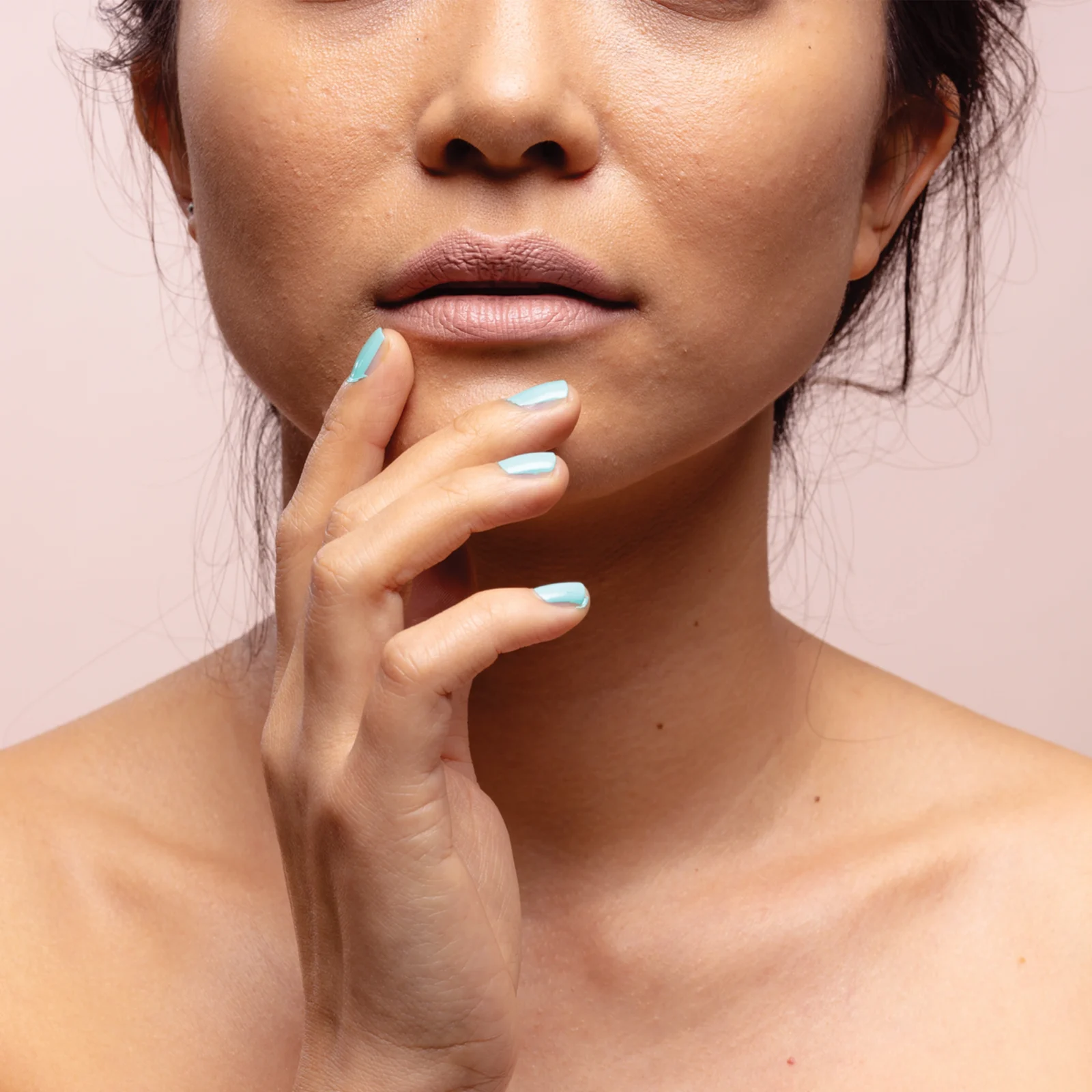Botox 101: What Filipinas Should Know About Starting Injectables
Thinking about getting Botox? From myths to medicine, here’s what first-timers need to know—straight from the experts.
By Ria de Borja
In the Philippines, the conversation around injectables has shifted dramatically. What was once whispered about in private is now openly discussed on TikTok, with Filipino content creators sharing their “tweakment” journeys and normalizing preventive beauty treatments. For Filipinas in their 20s and early 30s who are curious about Botox, but have never taken the plunge, the abundance of information can feel overwhelming. Whether it’s the amount of contradictory advice or all the myths versus the facts surrounding it, the misinformation about Botox is rife.
This guide is specifically designed for first-timers: those who are considering Botox as a preventive measure, but are unsure where to start, what to expect, or how to navigate the growing injectables landscape in the country.
We interviewed two dermatologists, Anna Palabyab-Rufino, MD, of Beautique MD who is a diplomate and fellow with the Philippine Dermatological Society and Kaycee Reyes-Bacani, MD, of Luminisce Holistic Skin Innovations who works in preventive medicine and is a fellow with the Philippine Society for Cosmetic Surgery. Both are experts in their field about using injectables for the prevention of wrinkles and other aesthetic concerns.
The basics
Social media has played a significant role in the shift of how Botox is perceived in the Philippines. A number of Filipino content creators share their experiences online, showing before and after photos and talking about their personal experiences with the procedure. People also subtly hint at their treatments rather than explicitly announcing them, which has made injectables feel more accessible and less intimidating for newcomers.
But what exactly is Botox? Simply put, Botox is a brand name for botulinum toxin, a neurotoxin that can temporarily weaken or paralyze muscles. Dr. Reyes-Bacani explains: “Think of Botox like a temporary pause button for specific face muscles. It’s a purified protein that blocks nerve signals to muscles that cause wrinkles, [which] stops muscles from contracting for three to six months.”
Dr. Anna Palabyab-Rufino shares another way of how it works: “[It] blocks the message from the brain to the muscle. So whatever the brain tells the muscle to do, it can’t because it never receives the message.” To be clear, this doesn’t mean that Botox impacts brain function. Once injected, Botox’s effect is simply localized at the muscle-nerve junction.
Like Dr. Reyes-Bacani, she agrees that “it wears off with time. It temporarily paralyzes, depending on how much you apply or inject into a muscle.”
Beyond cosmetic applications, Botox has numerous medical uses that many Filipinas might not realize. Many patients who come in to address crow’s feet discover that Botox can also help with their tension headaches or excessive underarm sweating.
It’s FDA-approved for treating chronic migraines, excessive sweating (hyperhidrosis), bladder overactivity, and muscle spasticity. In the Philippines, dermatologists also use it to treat jaw clenching (bruxism) and to slim the jawline by relaxing the masseter muscles, a muscle located in the cheek area that plays a crucial role in chewing.
This versatility makes Botox a practical choice for those dealing with multiple concerns simultaneously. Understanding Botox’s dual nature as both a cosmetic enhancement and medical treatment empowers Filipinas to make informed decisions about whether this versatile procedure aligns with their wellness and beauty goals.
What’s in a brand? Botox, Dysport, and Xeomin
While Botox is the most recognizable name, it’s not the only botulinum toxin available in Philippine clinics. “When it comes to injectables like these, I am quite brand conscious,” says Dr. Palabyab-Rufino. “I give patients options, because there are better candidates for certain brands.”
According to Dr. Reyes-Bacani, here are how other brands like Dysport and Xeomin compare:
Botox (OnabotulinumtoxinA)
- Most researched and widely used globally
- Takes 3 to 5 days to show effects, peaks at 2 weeks
- Lasts 3 to 4 months on average
- Best for: first-timers, precise treatments, forehead lines
Dysport (AbobotulinumtoxinA)
- Spreads more than Botox, covering larger areas with fewer injection points
- Faster onset: results are visible in 1 to 3 days
- May last slightly longer than Botox for some patients
- Best for: large areas like the forehead and patients who want quicker results
Xeomin (IncobotulinumtoxinA)
- A “naked” neurotoxin with no additives, so you have lower risk of developing antibodies or resistance
- Similar timeline to Botox: takes 3 to 5 days to show effects, peaks at 2 weeks, and lasts 3 to 4 months on average
- Best for: patients who have built tolerance to other brands and sensitive individuals
The key lies not in choosing the most expensive or popular brand, but in finding the formulation that best suits your individual anatomy, lifestyle, and aesthetic aspirations under expert guidance.
How do these injectables prevent or correct?
Whether it’s prevention or correction, injectables can help with wrinkles, fine lines and other concerns. “When it’s preventive, it stops wrinkles before they stick around permanently,” says Dr. Reyes-Bacani. “When it’s corrective, it fixes wrinkles that are already visible when your face is relaxed.”
“If you know that you’re the type to always furl your brows, or you see crow’s feet coming out, it’s good to have injectables already before the lines become static lines, or lines that are there even when you’re not moving your face,” explains Dr. Palabyab-Rufino. “Apply a little at a time so that you don’t repeat the same mannerisms or the same movements on your face.”
Both doctors concur: the “Big 3” preventive areas are the forehead (or the horizontal lines that may be seen when raising the eyebrows), between the eyebrows (or the “11” lines), and crow’s feet, which are the lines at the corners of the eyes when smiling.
Ultimately, the most effective approach combines early intervention with realistic expectations, treating your face as an investment in confidence that pays dividends over time.
What age should you start getting injectables?
“If you’re in your early twenties and you know that your muscles are quite strong, it could be good to start [preventive procedures] already, rather than later. If you’re waiting until you’re 35 or 40, it could be too late. Your muscles and your expressions are different from everyone else’s.”
This, of course, isn’t blanket approval for anyone over 18 years old. There needs to be visible changes on your skin to warrant a consultation. Specific skin concerns or early signs, such as dynamic lines, strong muscle movement may cause you to decide, along with the guidance of your doctor. Bottom line: there’s no one-size-fits-all age, only personalized timing.
For Dr. Reyes-Bacani, “for optimal preventive outcomes, treatment should ideally begin when early dynamic lines first appear, typically in the 25 to 35 age range.” She adds, “This timing allows for wrinkle prevention, while preserving natural facial expressions and potentially extending future treatment intervals. If you’re under 25, you’re probably too young—unless you have powerful expression lines. It’s better to start a little later than too early and regret it.”
What’s certain though is the market for injectables is trending younger. After Dr. Reyes-Bacani attended the GAIN (Galderma Aesthetic Injector Network) Conference in Incheon in October 2024, she found out that “the numbers don’t lie. According to recent industry data, 75 percent of facial plastic surgeons are reporting increases in patients under 30 . . . [and] education is driving this change. More people are learning that we start losing collagen as early as age 20, which is why preventive Botox has become less about vanity and more about proactive self-care. This isn’t about chasing perfection anymore. It’s about people taking control of their aging process before the signs even appear.”
The wisdom lies not in following arbitrary age guidelines, but in listening to your skin, consulting qualified professionals, and making choices that honor both your present self and future well-being.
Where should you go to try injectables?
There are several things to consider when choosing a clinic or dermatologist for the first time you try injectables.
According to Dr. Reyes-Bacani, a licensed doctor, not a nurse or aesthetician, should do the injections. She also mentions researching the number of years of experience the doctor has with using injectables, specifically asking about their experience with Asian and Filipino patients, and checking the before and after photos of Filipino patients they’ve worked with. She cites reading reviews from people who look like you and making sure the doctor uses authentic FDA-approved products. Additionally, the clinic you are going to should look clean and professional, not like a salon, and the doctor should spend time explaining risks, not just selling. Lastly, she says, “Ask about their emergency protocols if something goes wrong.”
Dr. Palabyab-Rufino adds, “It’s also good to get to know who your doctor’s other patients are. If you like how those people look, then maybe it’s worth trying. Now, if you see people who are confident and who love the way they look, but it’s not what your idea of beauty is, then maybe that clinic is not the place for you.”
Try to compare, she advises, because many people don’t talk about getting Botox or Botox-like injectables if nobody ever asks them about it, because they look very natural. “What you’ll notice most of the time are the bad jobs, because it wasn’t done properly. A lot of people attend parties looking fresh after getting injectables, but nobody asks because it’s not obvious.”
Remember, the best practitioner isn’t necessarily the one with the lowest prices or the most followers on social media, but the one who prioritizes your safety and shares your vision of natural, age-appropriate beauty.
The risks and side effects of injectables for preventive use
Understanding potential risks is crucial for first-timers considering injectables like Botox. According to clinical data from the U.K.’s Medicines and Healthcare Products Regulatory Agency, after analyzing 17,352 Botox injection sessions, they found an overall complication rate of 16 percent. However, the vast majority of these complications are minor and temporary.
The most common side effects, according to the study above and the FDA include the following:
- Headache and migraine: reported in 6.3 percent of injection sessions, the most frequent adverse event
- Bruising or hematoma at injection site: the second most common complaint
- Pain, swelling, or redness: typically resolves within hours to days
- Flu-like symptoms: can occur, but usually mild and short-lived
Droopy eyelid (ptosis)
This is the side effect most people worry about. Research shows the incidence rate varies significantly based on injector experience:
- Experienced injectors: Less than 1 percent of patients
- Inexperienced injectors: Up to 5.4 percent of patients
- Duration: When it occurs, it typically lasts for 2 to 8 weeks
Serious adverse effects
According to FDA data from 1989 to 2003 reviewing cosmetic Botox use, only 36 out of 1,031 reported adverse effects were considered serious, with 995 classified as non-serious. Serious reactions are extremely rare, but can include:
- Difficulty swallowing or breathing (very rare, usually from technique issues)
- Severe allergic reactions
- Unintended muscle weakness in distant areas
It’s important to seek medical attention if you’re experiencing difficulty breathing or swallowing, severe facial swelling, signs of infection at injection sites, and severe headaches that don’t respond to pain medication.
Botox-specific risks for preventive use
- Over-treatment leading to “frozen” appearance
- Eyebrow drooping if forehead muscles are over-relaxed
- Inability to make certain facial expressions
- Compensatory wrinkles forming in untreated areas
“The key is starting conservatively,” emphasizes Dr. Palabyab-Rufino. “Less is more. You can always add more units in a follow-up appointment, but you can’t take it back once it’s injected.”
Sources: UK MHRA adverse event analysis, FDA cosmetic Botox data (1989-2003)
What to expect during your first appointment
Come prepared with questions and expect ice packs, say both doctors.
“The consultation phase should take 30 to 45 minutes, including a medical history review, a case analysis and discussion of goals, an explanation of procedure and risks, and your time to think. Don’t feel pressured,” says Dr. Reyes-Bacani. “The treatment phase is about 15 to 30 minutes and includes face cleaning and marking injection points, tiny needle injections (feels like quick pinches), and ice packs to reduce swelling.”
Dr. Palabyab-Rufino stresses the importance of discussing expectations, “because it’s not gonna get rid of lines that are already there. It’s just supposed to weaken the muscle, for less movement.” She says it’s a rapid procedure, and “you can even put numbing cream [on] for around 20 to 30 minutes so that you don’t feel any pain from the injections. But usually we just ice and that’s it. The procedure itself is around five to 10 minutes. It’s swift.”
Post-treatment care is equally important, especially in the Philippines’ humid climate. Standard post-Botox recommendations include avoiding strenuous exercise for 24 hours, staying upright for three to four hours, and not massaging the treated area for four to six hours after injection.
Final takeaway
Recent cultural shifts have made us more open and—more importantly—better informed about these kinds of aesthetic procedures. For first-time patients, remember that this journey is uniquely yours. Take time to research, ask questions, and choose practitioners who understand not just the science of injectables, but the artistry of enhancing your features while preserving the expressions that make you distinctly, beautifully you. Whether or not you decide to try injectables is a personal decision—one that should be done responsibly, with your safety as a priority, and with the right, qualified practitioners.
- KEYWORDS
- Injectibles
You might also like
To provide a customized ad experience, we need to know if you are of legal age in your region.
By making a selection, you agree to our Terms & Conditions.







